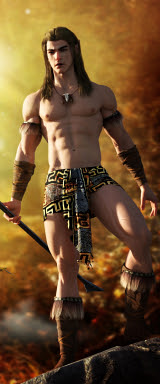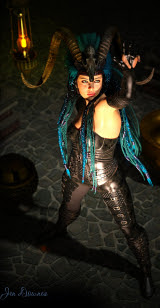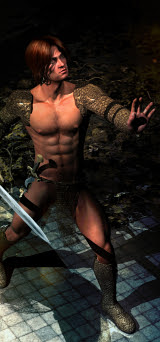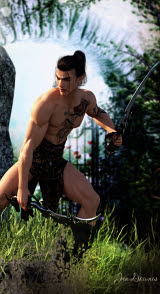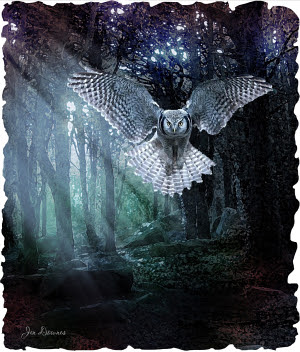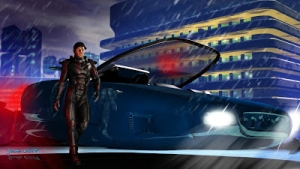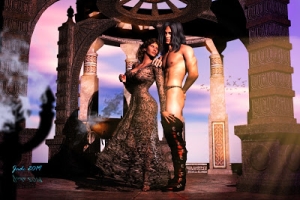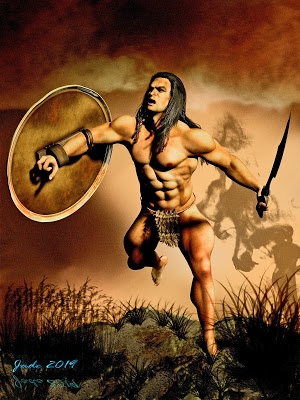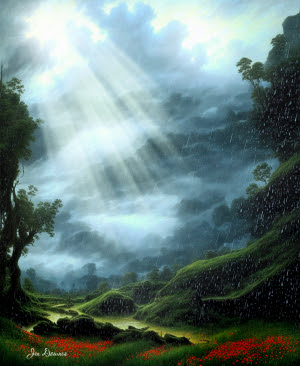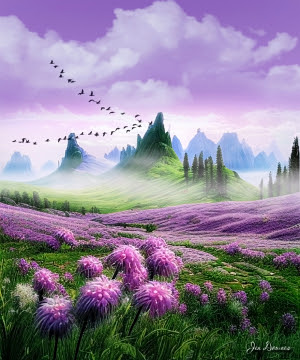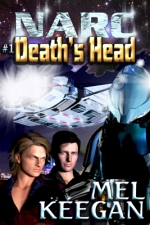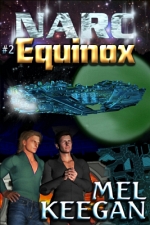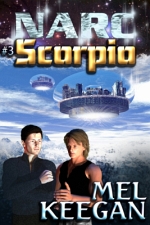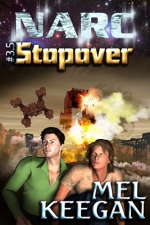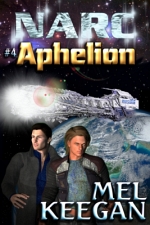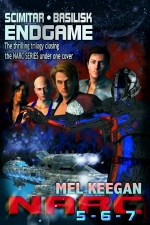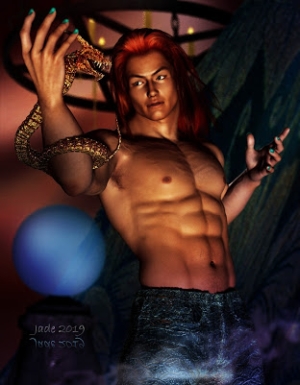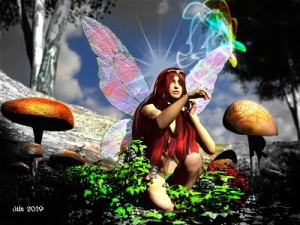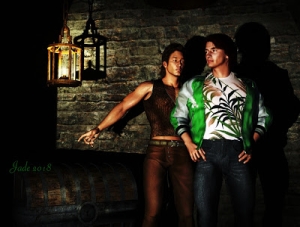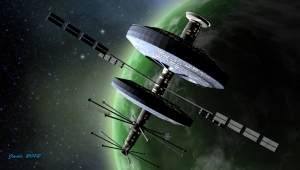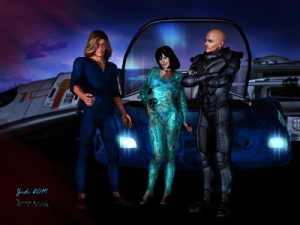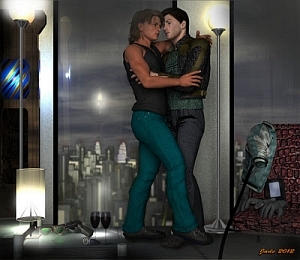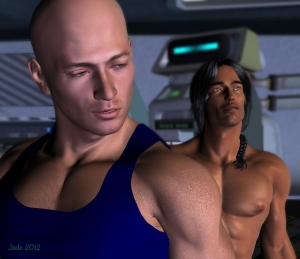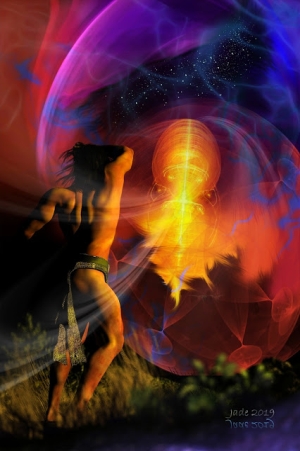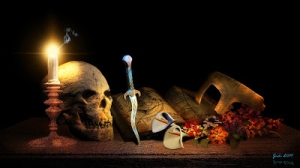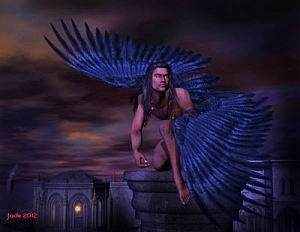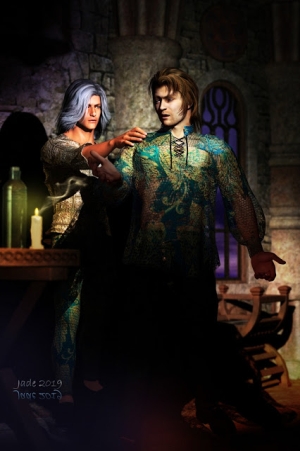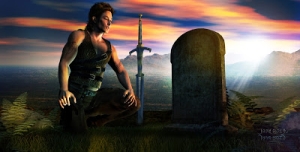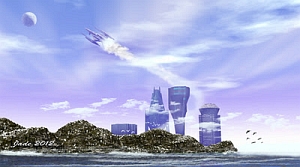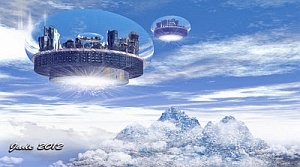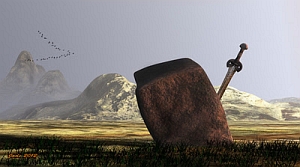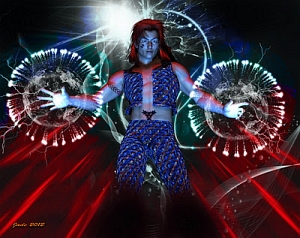

 One of the biggest challenges in CG art is lighting. Correction: THE biggest challenge is lighting. You can get the figures posed, choose a backdrop, get all the textures and maps just so, and then you come to the lights ... and two hours later you can still be trying to figure out what you're doing wrong! (Reminds me of the old saying that the most often asked question in photography is, "What went wrong?")
One of the biggest challenges in CG art is lighting. Correction: THE biggest challenge is lighting. You can get the figures posed, choose a backdrop, get all the textures and maps just so, and then you come to the lights ... and two hours later you can still be trying to figure out what you're doing wrong! (Reminds me of the old saying that the most often asked question in photography is, "What went wrong?") And of all the CG lighting challenges, daylight is the biggest one. Why? I think it's because the human eye knows exactly what daylight looks like. Get it wrong, and it's going to be instantly obvious that something isn't right, even if it's not immediately obvious what isn't!
There are CG programs that do great daylight work -- Vue would be the best at the desktop level, I think. But Vue needs an investment in terms of cash and hardware that puts it out of the reach of many of us. Bryce is reasonably good, but I still haven't see true photo realism from Bryce, and I've had renders that took days... Which brings you back, in any event, to DAZ Studio and Poser, in which the majority of us work, and DAZ is certainly thhe program I know best. In Vue, even the entry level program has a fantastic environment, sky and weather lab, and I have to say, the results are amazing. I spent a couple of months romancing Vue 7 and 8, before I admitted defeat due to a loooong series of catastrophic computer crashes. I've since heard that Vue 8 is "buggy as an antfarm" -- people say the same thing of Bryce, though I don't get the crashes in Bryce 7 pro.
Here's one of my very first Vue renders:

...and you're not going to get that from DAZ or Bryce. They're not designed that way and don't work that way. Horses for courses. But you can get some pretty interesting stuff in DAZ -- and this, here, is worth seeing at 1:1 size:
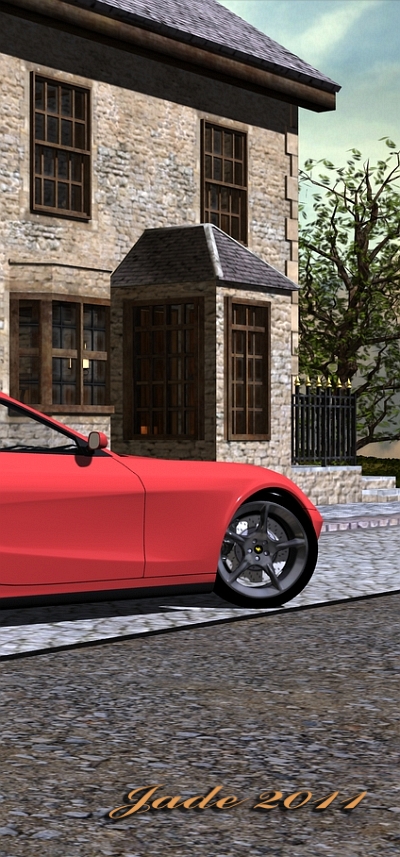
...nice effect, lovely detail. In fact, the only thing in this shot that gives away the fact it's CG and not real, is the tree. It's a beautiful model, but realistic trees are another thing you don't find in DAZ and Poser ... they're better in Vue, but then again, Vue is a dedicated landscape maker, like Terragen, so you'd expect them to get it right! DAZ is more about imaging things and people. Like I said, horses for courses. To do it all just right, you need to be running Vue and DAZ, I think ... not that they shake hands with each other, because they don't! But you could generate your backdrops and skies in Vue, and then do your foregrounds in DAZ.
What's the trick to daylight? "Just" jockeying the lights! You'll get best results with distance lights, and to get realistic shadows you need to have them very far away from the subject and, if it's a blue sky day, they need to be very bright. You might need to clone the light three or four times, and set the shadows on one or two of them. The brighter the sunlight, the harder the shadows, so your lights need to be set up to match the backdrop. If you're using a photo, look hard at it. See which direction the light is falling from. Which direction are the shadows running, in the photo? This tells you where the sun is, in your virtual sky. Then set up three or four distant lights in that place, and turn on the shadows. You'll need a couple more lights, to get a fully realistic shot.
Light always bounces back off surfaces, so you need to set a dim light down low and angle it up at your subjects. Also, because the 3D stage has none of the natural ambiance of the open sky, set a full-in light. A fill-in is a dimmer light set off into the shadowed area, and it shines enough low-key light into the shadows to make them look right to the human eye, without filling them in so completely that the shadows disappear.
The last thing is to think about the color of the lights. Daylight changes in its "color temperature" depending on the time. Roses and butter at dawn ... blood and gold at sunset ... and they don't call it "the blue light of day" for nothing! Full daylight, around noon, late morning, early afternoon, tends to be a bit blue.
In many ways, artificial light -- like lamplight in the night -- is easier to handle. You can do pretty much what you like, because the human eye will accept is as lamplight. Daylight's another kettle of fish entirely ... and I long to get back to Vue. Next year, with a computer that'll really handle it.
Jade, 5 April
***Posted by MK: my connection is intermittent, too slow for this. Seriously, guys, I've got dialup speeds. How are you expected to do anything these days, at 1990 dialup speeds?!!!


















